North Country Honor Flight #65 Military Biographies
Flight 65 flew on September 6, 2025
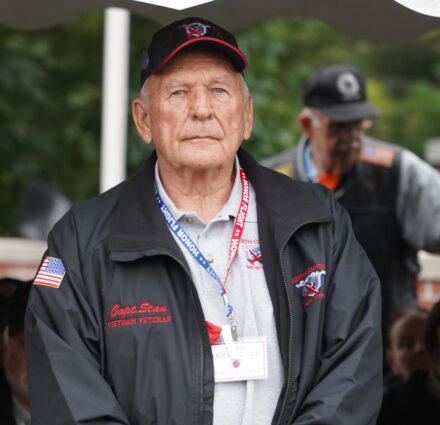 Stanley Abramczyk Jr. , US Air Force 1963-1986 Vietnam
Stanley Abramczyk Jr. , US Air Force 1963-1986 Vietnam
Stan planned to join the Navy, but fate stepped in—the only recruiter there that day was from the Air Force. He pitched aircraft maintenance, and Stan never looked back. For 23 years, he loved what he did, reenlisting again and again because it never felt like just a job.
He trained at Lakeland AFB, then served in places like Goose Bay, Stewart AFB, Thailand, Laredo, Selma, Pease, Germany, and finally Plattsburgh. Though he never went to Vietnam, the aircraft he maintained sure did.
Promoted to Aircraft Maintenance Superintendent in Germany, he finished his career at Plattsburgh—then stayed on as a civilian for seven more years until the base closed. Stan took real pride in his work. Whether on the flight line or during deep inspections, keeping those planes mission-ready gave him purpose—and pride in knowing he helped keep them flying.
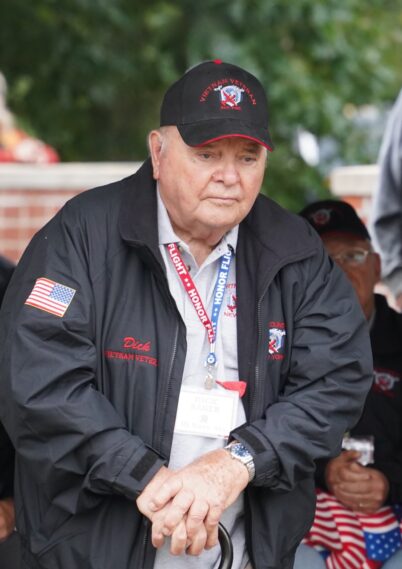 Richard Baker, US Navy 1960-64 Vietnam
Richard Baker, US Navy 1960-64 Vietnam
After training as a Diesel Mechanic at Great Lakes, Dick was stationed on Nantucket Island, Massachusetts, where he maintained generators that powered equipment used to monitor Russian transmissions. His 13 months there passed quickly, and he was transferred to Guantanamo Bay, Cuba—known as Gitmo.
At Gitmo, Dick described himself as a “dry land sailor,” though he also worked on tugs and ferries. He vividly recalled going on high alert during the Cuban Missile Crisis—when his wife was immediately evacuated—and again following President Kennedy’s assassination. He also remembered when Cuba shut off the base’s water supply, and Navy ships had to produce drinking water.
When it came time to reenlist, Dick requested a post in Japan, Italy, or Scotland. The Navy offered a destroyer out of Boston. He declined, saying simply, “I left.” He liked his time in the service and made some great friends.
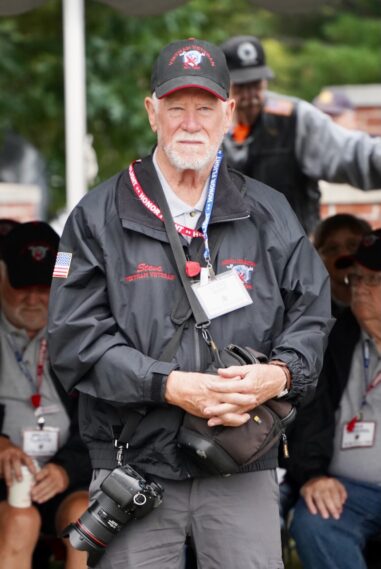 Steven Burt, US Air Force 1970-1975 Vietnam
Steven Burt, US Air Force 1970-1975 Vietnam
After initial training, Steve was assigned to Lowry Air Force Base in Colorado to become a Nuclear Weapons Specialist. His first post was in Duluth, Minnesota, with a Tactical Unit monitoring nuclear activity in extreme cold. He often worked outside to ensure weapons were clean, secure, and fully functional— “No one wants to be hit by a dirty bomb,” he says.
He was later stationed at a NATO base on the Peloponnese peninsula in Greece. The base, once a German facility during World War II, still had bullet holes in the walls. Always armed with an M-16, Steve faced constant threats from a neighboring country rumored to be after nuclear material.
Steve recalls the job as one of high risk and constant tension—where every task demanded precision, and even the smallest error could lead to disaster.
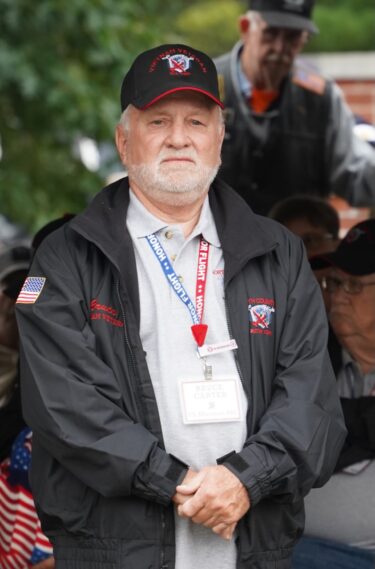 Bruce Carter, US Marine Corps 1964-1968 Vietnam
Bruce Carter, US Marine Corps 1964-1968 Vietnam
Bruce left Montreal on a Greyhound bus to join the Marines. They arrived at Parris Island after midnight, and as soon as he stepped onto the footprints, the drill instructor barked, “You maggots woke me up.” That was just the beginning.
Bruce worked in transportation, escorting convoys. In 1965, while en route to Okinawa, Typhoon Trix delayed their journey. He trained in guerrilla warfare, sailed to Da Nang, and ended up in Chu Lai.
One night, while on a listening post in a foxhole with a buddy, they wrote a letter to President Johnson about mail delays in Vietnam. Bruce was surprised to get a response assuring that the problem was being fixed.
He valued the discipline the Marines instilled and still attends reunions. Asked if he’d do it again, he’d sign up in a New York minute. After 31 years and 5 days, Bruce retired—back at the same Greyhound bus company where his journey began.
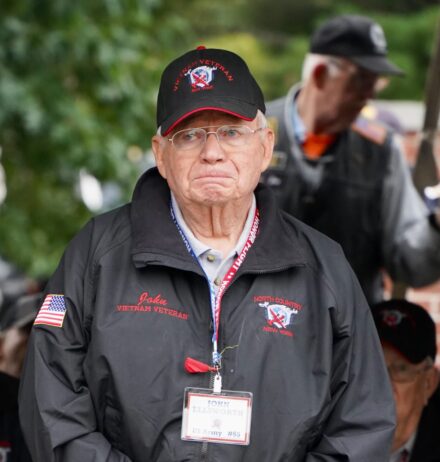 John Ellsworth, US Army 1965-1967 Vietnam
John Ellsworth, US Army 1965-1967 Vietnam
John was drafted into the Army during a time of great uncertainty. His father, a farmer, received a deferment to stay home and support the family.
After basic training at Fort Dix, John went to Fort Sill, Oklahoma, where he trained in heavy artillery. Then, after a short leave at home, he was deployed to Vietnam.
In Vietnam, he drove a truck through the rugged Central Highlands, hauling ammunition and troops. The roads were dangerous, often targeted by enemy fire. Once, his truck hit a landmine near the edge of the road. It blew out a dual wheel—but they chained it up and kept moving.
John has deep respect for the infantrymen he served alongside. He spent the year in Vietnam constantly on alert, knowing danger was always close.
Looking back, he says he would do it all again—and feels incredibly lucky to have made it home.
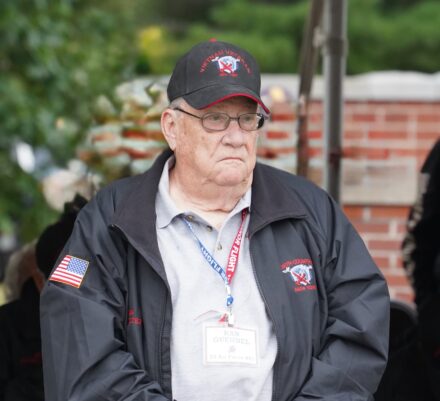 Randolph Guennel, US Air Force 1960-1980 Vietnam
Randolph Guennel, US Air Force 1960-1980 Vietnam
Ran enlisted in the Air Force and left for basic training before even attending his high school graduation. He trained as an Admin Clerk in Amarillo, Texas, and after a few years in Japan, he returned to the U.S. and cross-trained as a Safety Officer—a role he held for the rest of his 20-year career.
One of his most challenging assignments was at Binh Thuy Air Base in Vietnam, where he served as the sole safety officer, managing frequent incidents on his own. He later served as a Safety Technician and Superintendent at bases across the U.S. and around the world.
In 1985, Ran was named Outstanding Safety Manager of the Year. In 1992, he became the first recipient of the Air Force Safety Career Professional Award for his work in mishap prevention.
After retiring, he continued his safety work as a civilian. Ran says he’d do it all over again—he loved serving and the chance to see the world.
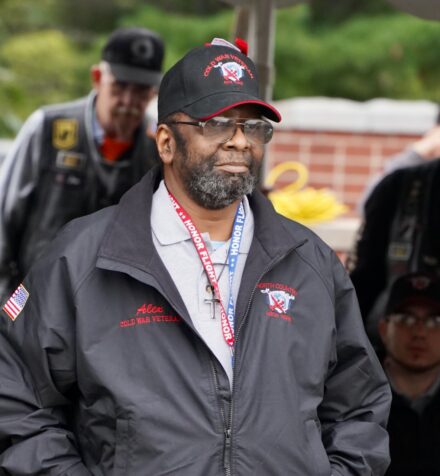 Alexander Inniss, US Army 1978-1983 Cold War
Alexander Inniss, US Army 1978-1983 Cold War
Alex began his military journey at Fort Benning, Georgia, for basic training, then moved on to Fort Lewis, Washington, with the 2nd Battalion of the 75th Ranger Regiment. His first 18 months were spent in rigorous training—starting in law enforcement, then transitioning to the elite Airborne Rangers, where he earned his parachutist badge after multiple jumps.
He vividly remembers the grueling Yakima Mountain hike, designed to push soldiers to their limits and weed out the unfit. Though Vietnam had just ended, Alex’s entire service was focused on readiness, training exclusively at Fort Lewis.
His dedication left a lasting mark—his younger brother, seven years his junior, credits Alex as his reason for enlisting and went on to serve 20 years. Alex looks back on his time in the Army with pride and encourages young people to consider the military, saying it has so much to offer.
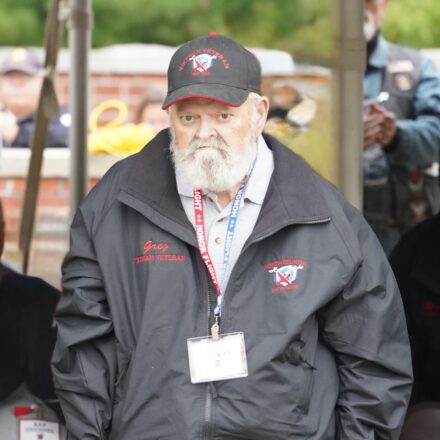 Gregory Lavene, US Marine Corps (1967-1974) & US Coast Guard (1977-1990) Vietnam
Gregory Lavene, US Marine Corps (1967-1974) & US Coast Guard (1977-1990) Vietnam
Greg enlisted early with his mother’s permission but was initially rejected for flat feet. He persisted, got cleared by a doctor in Albany, and trained at Parris Island as a rifleman, later becoming a stealth sniper. Too young for combat, he was sent to Arizona, where a prank with rattlesnakes left him unconscious and hospitalized for three days.
Just after turning 18, Greg deployed to Vietnam near Đông Hà. He and his spotter were inseparable—until a rocket strike took his partner’s life just moments after Greg woke him for watch, a loss he still carries.
Exposed to Agent Orange while clearing vegetation around camp, Greg continues to battle its effects.
After Vietnam, he joined the Coast Guard, installing electronics on towers and ships—his tallest reaching 1,375 feet. For his courage and sacrifice, Greg was awarded multiple honors, including the Marine Corps Vietnam Medal for Gallantry.
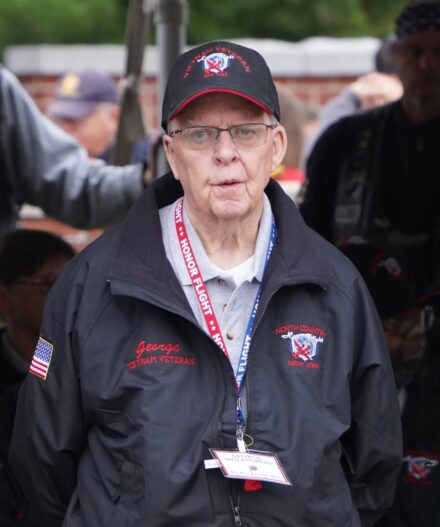 George McLaughlin, US Air Force 1965-1968 Vietnam
George McLaughlin, US Air Force 1965-1968 Vietnam
Drafted into the Army, George quickly realized the Air Force might suit him better—so he enlisted there instead. After basic training, he was sent to Sheppard Air Force Base in Wichita Falls, Texas, where he trained as a teletype operator in a special security unit, decoding classified messages from intercepted signals. Next, in Cudjoe Key, FL, he continued his top-secret communications work on a Navy base.
After 18 months, George was deployed to the Baltic Sea in Turkey, just 90 miles from the Russian border. There, he intercepted and decoded sensitive information, forwarding it to intelligence command. His final posting was at Kelly Air Force Base in Texas.
While in Turkey, George—an avid bowler—applied for a tournament in Germany. Not only did he compete, but he won the singles championship, adding a personal victory to his military accomplishments.
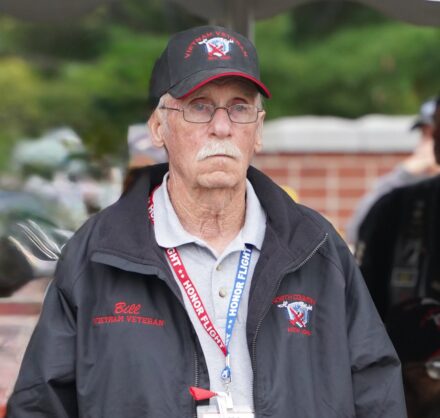 William Meigs, US Army 1969-1977 Vietnam
William Meigs, US Army 1969-1977 Vietnam
Bill received a draft letter from President Lyndon Johnson and entered the Army, completing basic training before being assigned to Fort Meade, Maryland, as a truck driver with the 6th Armored Cavalry. At the time, his brother was serving in Vietnam, which initially spared Bill from deployment overseas. He remained at Fort Meade while others shipped out.
That changed when his brother returned from Vietnam in December 1969. The following month, Bill received orders to deploy. He was sent to Long Binh, Vietnam, where he served with the 3rd Ordnance Battalion for 10 and a half months. Most of his time there was spent operating a forklift, loading ammunition onto trucks headed for the front lines.
As President Nixon began drawing down troop numbers, Bill was sent home. He says the best part of his service was making some “wicked good” friends. After active duty, he continued to serve in the Vermont National Guard with the 131st Engineers for another six years.
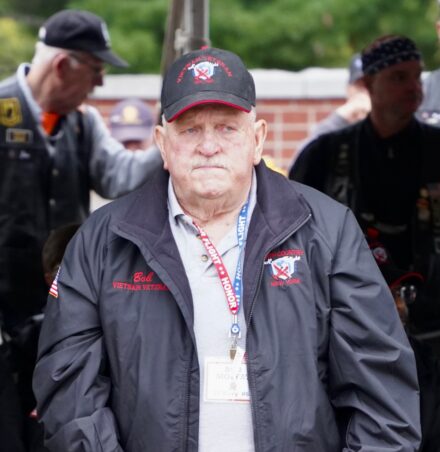 Robert Moffat, US Navy 1960-1966 Vietnam
Robert Moffat, US Navy 1960-1966 Vietnam
After Great Lakes, Bob was stationed in Jacksonville, Florida, assigned to the aircraft carrier Shangri-La. Though he and fellow Flight 64 member, Wes Facteau, both served on the Shangri-La, their tours were at different times. As a Boatswain’s Mate, Bob helped maintain the massive ship and traveled extensively—with a large convoy of destroyers, cruisers, and submarines—to England, Iceland, Greenland, and throughout the Mediterranean.
While onboard, two planes were lost, and one incident nearly cost Bob his life. While resting behind a large I-beam, a landing aircraft struck it. The beam bent from the impact—but didn’t touch him.
Despite the dangers, Bob fondly recalls roller skating around Jacksonville and the men he served alongside. “It was lots of fun.”
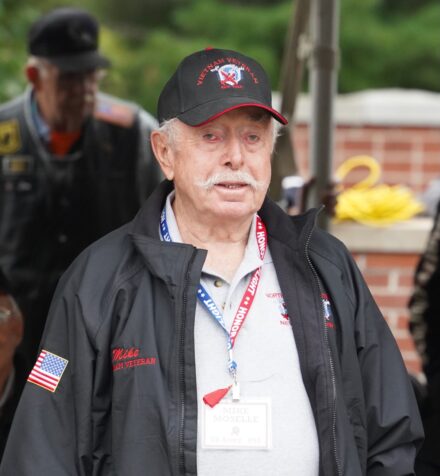 Michael Moselle, US Army 1962-1965 Vietnam
Michael Moselle, US Army 1962-1965 Vietnam
Michael enlisted in the U.S. Army and trained at Fort Leonard Wood, Missouri, as a heavy equipment operator, specializing in crane operations. He was then stationed at Camp Leroy Johnson in New Orleans, where he spent a year—half of it on TDY, training reservists on equipment use.
France and Paris came next. Upon arrival, he discovered there were no cranes. Because he could type, the Army reassigned him as company clerk in the orderly room, a post he held for a year and a half.
He recalls when President Kennedy was assassinated in 1963, and his base went on high alert. While in France, he befriended his Captain—a 5’7”, 305-pound Army wrestling champion—who often invited Michael out for their mutual favorite: Mexican food.
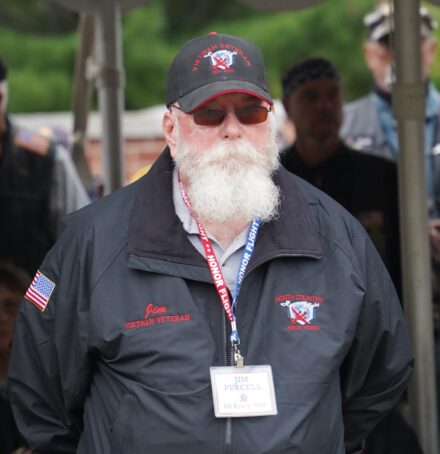 James Purcell, US Army 1967-1969 Vietnam
James Purcell, US Army 1967-1969 Vietnam
Jim had a choice: be drafted or go to Canada. He came from a family of veterans—his father was a Navy Seabee in WWII, and his grandfather flew in WWI.
After boot camp, Jim deployed to Vietnam as a combat engineer. While stationed at Tay Ninh, his unit was sent to repair a road destroyed by the Viet Cong. That day, a command-detonated charge hit the third truck in their convoy, killing his best friend, Michael McClain, who later received the Purple Heart. Jim still hopes to honor him someday.
Returning home in 1969, Jim didn’t wear his uniform—afraid of being called a “war criminal.” It was ten years before anyone said, “Welcome home.” Still, he carried himself with quiet dignity—proud of his service, even if the world wasn’t ready to see it.
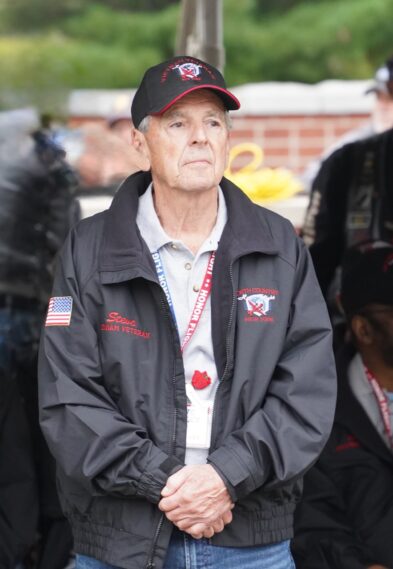 Stephen Shanley, US Army 1969-1971 Vietnam
Stephen Shanley, US Army 1969-1971 Vietnam
After Basic and Advanced Infantry Training at Fort Dix Steve deployed to Vietnam for a 12-month tour. After landing in Saigon, he underwent ten days of in-country training, where he was bluntly told, “Forget everything you learned in the U.S.—this is how it’s done in Vietnam.”
He was first assigned to the 82nd Airborne Infantry Division, tasked with flushing out enemy forces, often engaging in intense firefights. When they left Vietnam in 1969, Stephen was reassigned to the 1st Cavalry Air Mobile Division. There, he flew over 25 helicopter combat assault missions into hostile areas, facing close quarters combat in search of the Viet Cong.
Steve is highly decorated, having earned the Bronze Star Medal, the Vietnam Service Medal with two Bronze Service Stars, the Vietnam Campaign Medal with 60 Devices, and the Vietnam Gallantry Cross with Palm.
Posted: September 7th, 2025 under Adirondack Region News, Community Events, General News, Honor Flights, National History, National News, Northern NY News, Peru/Regional History, Veterans' News.
